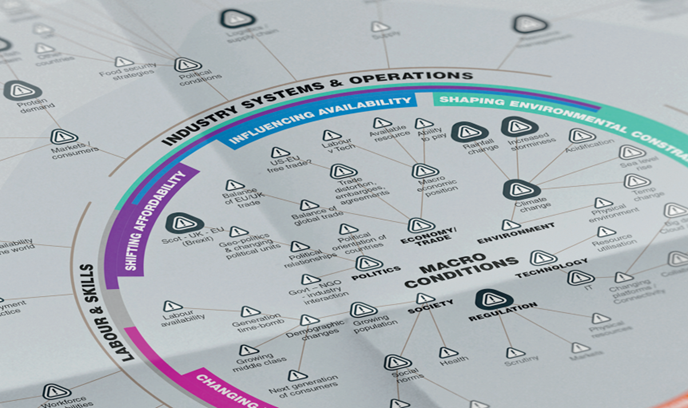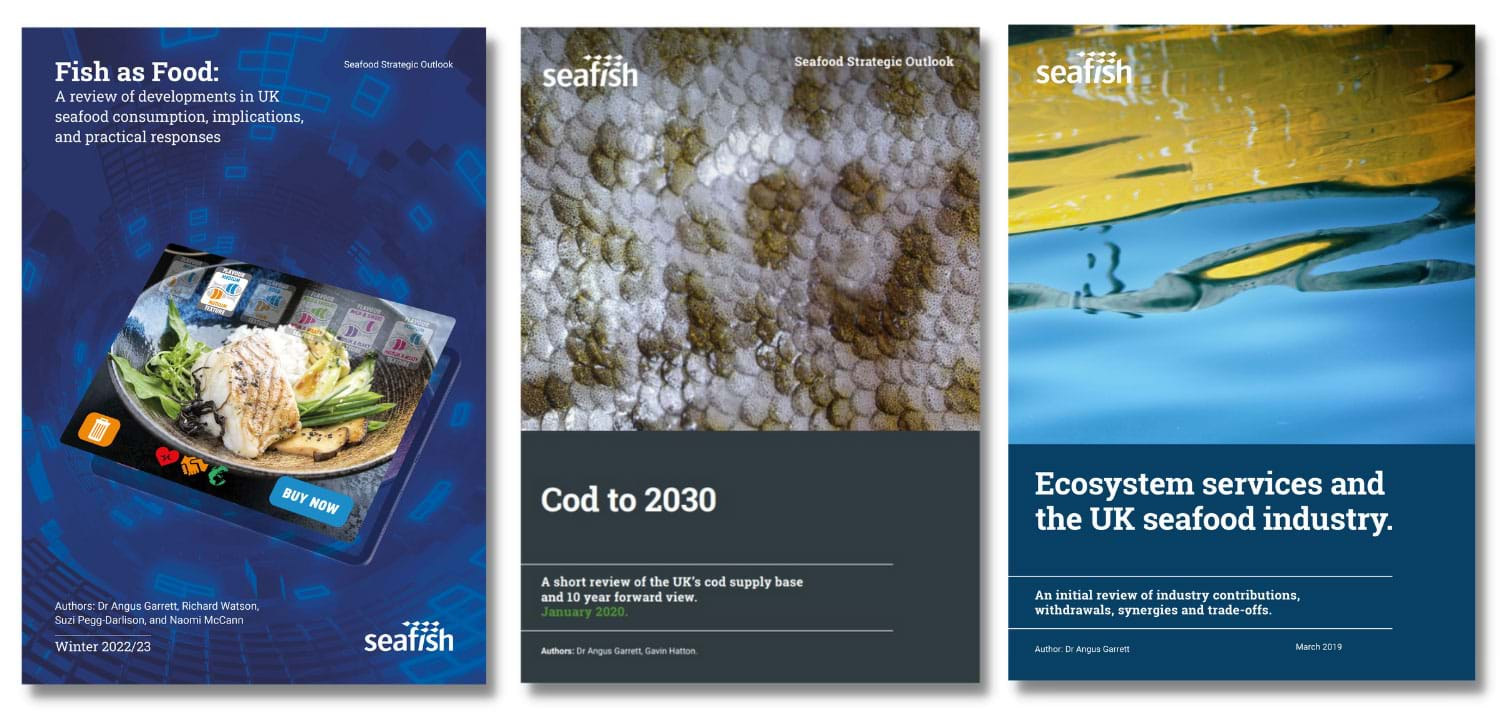Current and future trends impacting the UK seafood industry
This page has information on:

To identify industry changes and longer-term trends we regularly scan the seafood industry landscape. This means working closely with industry stakeholders to gather, analyse and share information. Then we share insight to help seafood businesses respond, informing their longer-term decision making and strategic thinking.
Our horizon scanning work involves:
- Gathering intelligence – collecting information and signals in real time about what is changing in the seafood industry and the wider world.
- Making sense of the changes underway - understanding the changes that could impact the seafood industry through our annual industry landscape map and dashboards identifying likely and high impact changes.
- Special horizon reviews – focusing on understanding changes likely to have the greatest impacts, anticipating how they might play out and affect industry.
All of this work is overseen by an industry steering group.
You can read more about our special reviews from the links below. It is important to bear in mind that our special reviews combine data, opinions and conjecture. They are position papers at time of publication. The evidence gathered today might suggest trends or changes which turn out differently over the longer term.

The future of seafood consumption
UK consumption of seafood continues to be relatively low when compared to other proteins and consumer perceptions play an important role in seafood purchasing decisions. The seafood industry must navigate both immediate challenges relating to what’s happening in the market now, as well as intermediate challenges which could lead to significant structural change.
Our latest horizon review considers what the future of seafood consumption in the UK might look like. It explores the key drivers for consumption and considers and potential industry impacts and opportunities. Find out more from the link below:
Climate change adaptation
Climate change is one of several longer-term developments which influence the global food system. It is one of the major challenges facing humanity and adapting to the impacts of climate change presents a strategic challenge for the seafood industry.
We produce climate change adaptation reports and keep a watching brief on how climate change impacts on UK seafood supply chains. Find out more from the link below:
Ecosystem services and public goods and benefits
Ecosystem services are the many resources and benefits provided by nature to humans. The seafood industry draws on these natural resources to provide food. This can have an impact but we also know that aquaculture and wild capture fisheries can help maintain and enhance ecosystem services.
We’ve looked at the public goods and benefits from commercial seafood species and how seafood production can maintain and enhance ecosystem services. Find out more from the link below.
Seafood supply and food security
The UK has an open and diverse seafood economy worth £10 billion. Its supply chain draws on both farmed seafood and wild caught seafood from around the world. A growing world population in need of food, and the requirement to produce food within environmental constraints, creates food security challenges.
We’ve carried out reviews of seafood supply and food security as they relate to the UK seafood industry. Find out more from the link below.
Automation and the UK seafood industry
Labour and automation are how essential industry tasks are undertaken within the seafood industry. It’s important to understand current trade-offs between labour and automation and any threats and opportunities that may arise as these trade-offs evolve into the future.
We’ve looked at how developments in labour and automation might affect the seafood industry. Find out more from the link below.
Other reports from horizon reviews
Other older horizon reviews are also available on a range of further topics. We’ve previously looked at changing political conditions in the UK, product integrity and food fraud, UK exports and NGOs and the seafood industry. While these reviews not recent we are seeing some key issues, such as product integrity, returning as important challenges for industry.
You can download copies of older reports from the links below:
-
Brexit and the UK seafood industry
-
Product integrity: An initial review of developments, implications, and practical responses
-
Trade Developments: An initial review of developments, implications, and practical responses
-
The next NGO priority: An initial review of developments, implications, and practical responses
Contacts
To find out more about our horizon scanning work contact: